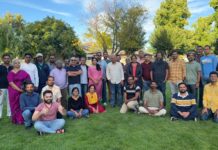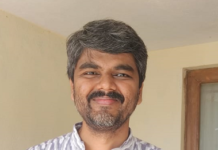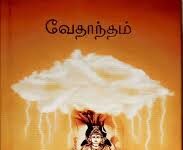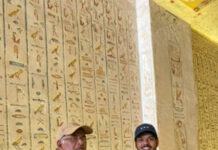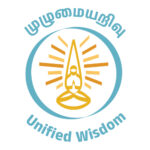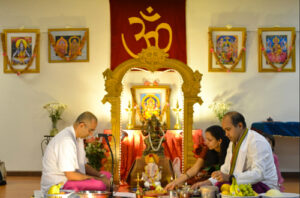
The cultural movement that is flourishing in India is the Bhakti movement. Indilogista may say that India itself is the creation of the Bhakti movement. Hundreds of sages and poets have emerged and kept the Bhakti movement alive to this day.
Advaita, the pure philosophical movement, emerged in India in the 9th century. Following that, thoughts like Vishishtadvaita and Dvaita emerged. However, the Bhakti movement transcreated advaita as Vishishtadvaita and Dvaita. Over time, Bhakti also absorbed Advaita in it. As a result, only Bhakti remained in India. The Indian philosophical movement itself was destroyed by the Bhakti movement. Some scholars, especially Westerners, are arguing like this.
They say that Bhakti is essentially against philosophy. Bhakti is based on unabashed dedication. Faith is its essence. Philosophy is what encourages logical inquiry and rational thought. Therefore, Bhakti refutes philosophy. They say that the Bhakti movement has destroyed the very thought of India by stifling philosophy.
Is this true?
I will give a brief picture of the Bhakti movement.
The Bhakti movement began in the 7th century BC. (We call the Bhakti movement a specific cultural movement that emerged in Tamil Nadu during the period of the Pallavas, started by early Azhwars, and later spread throughout North India.)
It does not mean that there was no Bhakti before that. Bhakti has always existed in many forms—even before historical times. Tribals have worship and devotion to their gods. The Stone Age symbols that we find in various parts of India mainly show their gods. Cave paintings show that gods and Bhakti have existed since the Stone Age, before the discovery of fire and the beginning of formal communication through language. All the Stone Age cave paintings have a priest.
There were many types of worship in India. All of them originated from the tribes. One such is the Vedic tradition. The Vedic tradition involves burning incense and worshiping intangible gods. The non-Vedic tradition engaged in worship by presenting sacrifices and offerings. They worship the gods found in stones, soil, and wood.
When mankind was a group of people, these worship traditions developed separately and in many strands. During the formation of historical states, a diverse range of people coexisted within them. At that time, they talked to each other and mixed together.
Only then did philosophy emerge. Religions expanded the symbols and images in worship theoretically. Those philosophical metaphors became explanations for combining different worships. That is how religions emerged. All religions emerged as a collection of various worships through cultural integration.
Religions in the Indian subcontinent may have emerged three thousand five hundred to four thousand years ago, at the beginning of the Iron Age. When states became empires, religious cults became major religions. Different ethnic groups needed a major religion to unite. Or when people united, a major religion emerged. Saivism and Vaishnavism became major religions of India.
The Bhakti movement began only several hundred years after the formation of the major religions of Saiva-Vaishnavism. Therefore, the Bhakti movement did not create major religions. The Bhakti movement is something that emerged within the major religions.
Why did it emerge? We can understand it by examining both the content of the Bhakti movement and the subsequent historical changes created by it.
A. The core of the major religions was based on the Vedic rituals, and only the elite were involved in it. It was through the Bhakti movement that the core of religions came under the control of the common people—the grassroots people. The Bhakti movement itself is sometimes called the Sramana movement, the toiler’s movement. All the stories of the Bhakti movement show that the pure devotion of the simple people is closer to God than the knowledge and rituals of Vedic tradition.
B. The Bhakti movement brought the rituals, beliefs, and customs of the lower classes of Indian society into the mainstream religions and brought them to the center.
E. The Bhakti movement presented music, poetry, and arts as the face of devotion instead of grand Vedic rituals.
Historically, the Bhakti movement is not just devotion. It is a kind of socio-political uprising of the common people. Through it, the religious power, ideological power, and economic power came to the working people.
Shankara is not an opponent of the Bhakti movement. He refers to himself as a friend of the Bhakti movement. He fondly calls Gnanasampandhan, the proponent of the Tamil Saiva Bhakti movement, ‘Dravida Sisu.’.
The pure ‘theory of Brahman’ presented by Shankara theoretically unified all the six sects of Hinduism. It actually helped the Bhakti movement.
Yes, today’s India is a creation of the Bhakti movement. All our literature, arts, and music were born from the Bhakti movement. Hundreds of millions of people, living semi-tribal lives in hundreds of ethnic groups, were brought together in the Saiva-Vaishnava religions. They gained identity and power. All our rituals—marriage, birth, and death—were defined by the Bhakti movement.
The Bhakti Movement was a recovery-integration movement. It consolidated the cultures of the basic people of India. But the philosophies of Sankara and other Vedantins helped them to define themselves and flourish.


